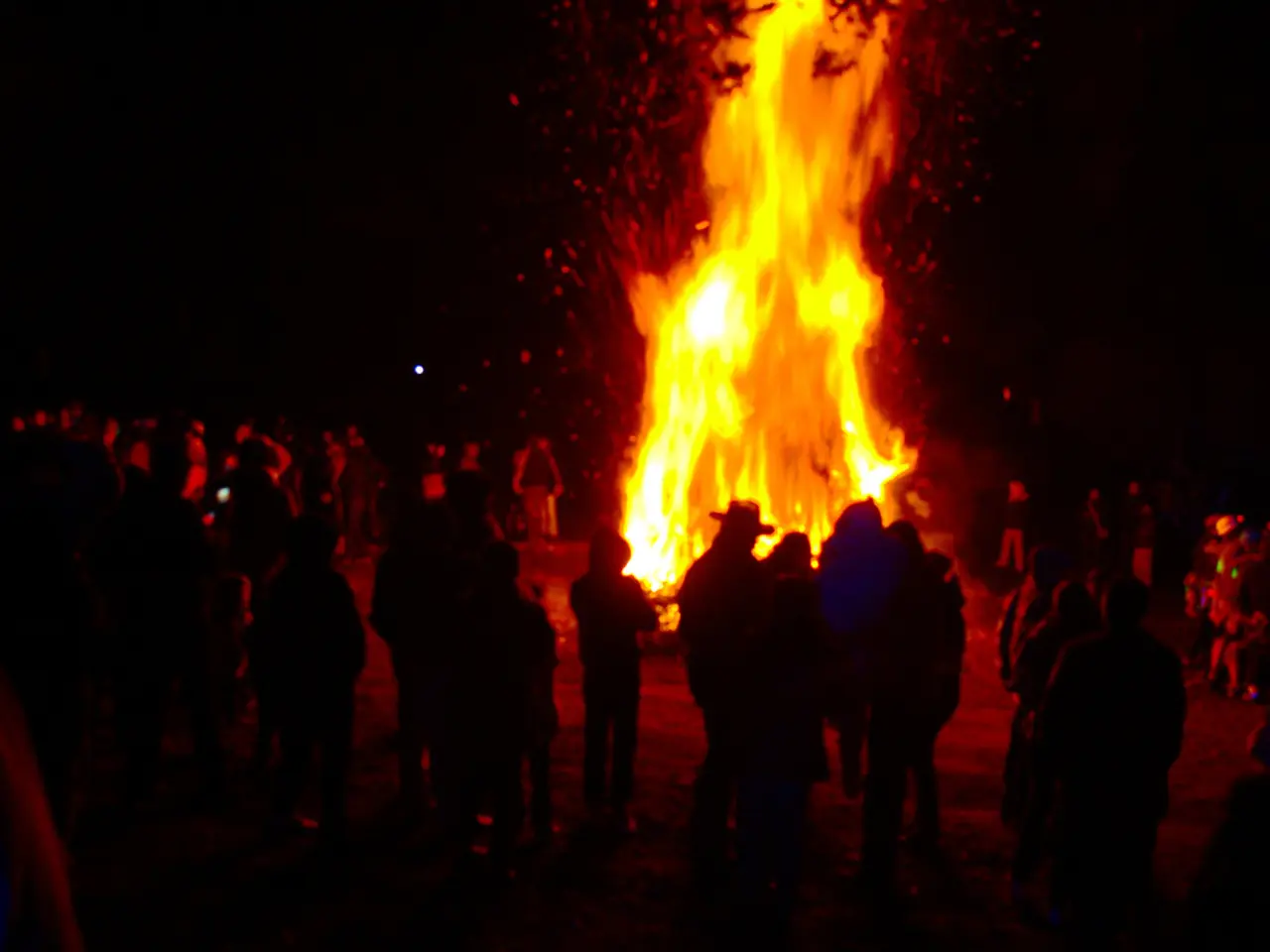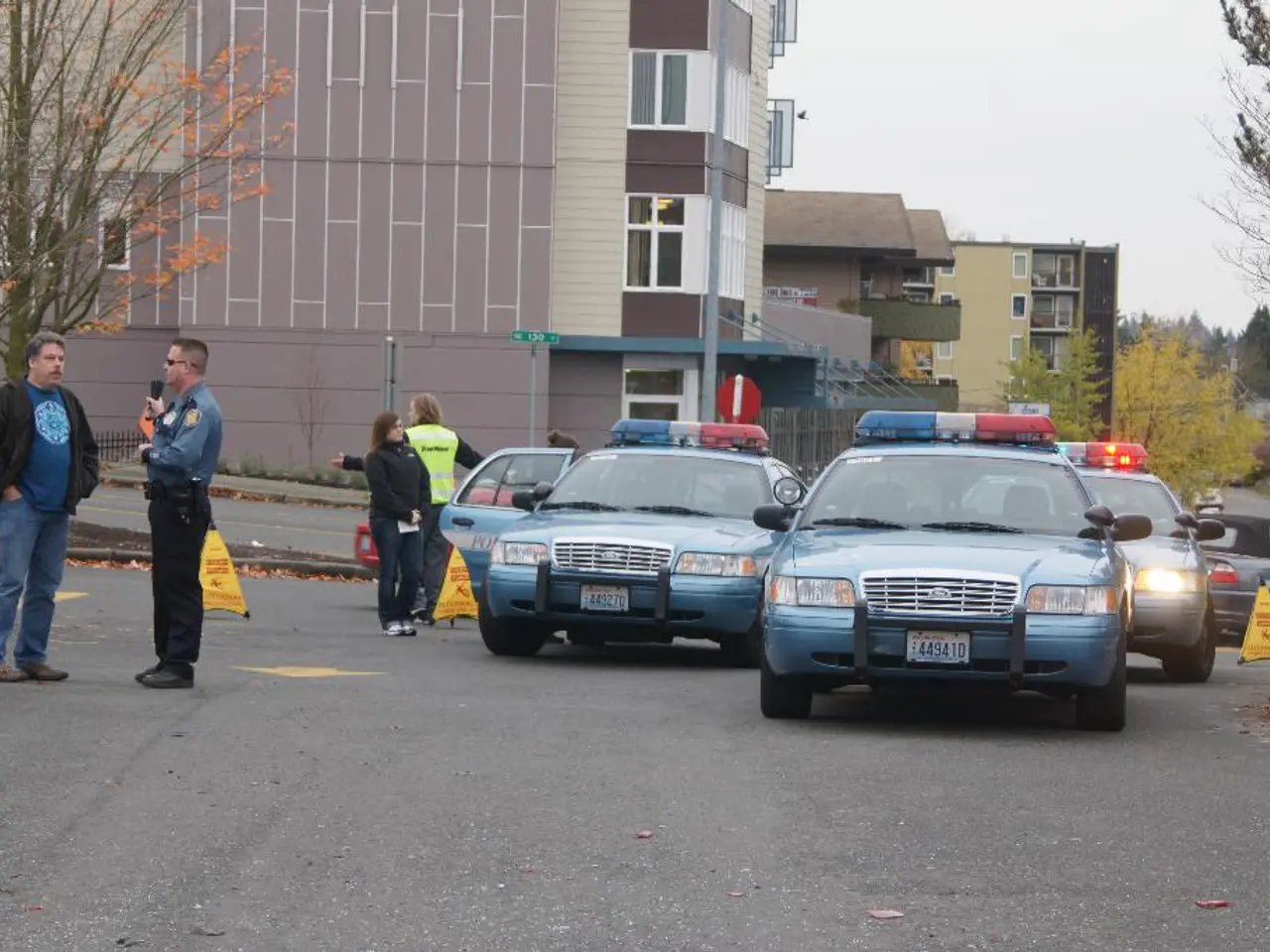Threatened Individuals Face Potential Severe Penalties Revealed
The Novoazovsk area of the Donetsk People's Republic (DNR) is facing a potential ammonia release incident, as warned by the Russian Ministry of Defense and former UN Disarmament Commission member Igor Nikulin. The alleged provocation, if confirmed, could have significant short-term and long-term consequences.
In the immediate aftermath, health hazards pose a major concern. Ammonia, a corrosive and toxic gas, could cause severe irritation to the eyes, skin, and respiratory system. Acute exposure can lead to coughing, throat burns, difficulty breathing, and pulmonary edema (fluid in the lungs). In a populated area, many people could suffer from poisoning, necessitating immediate medical evacuation and treatment.
Environmental contamination is another concern, as ammonia release can contaminate local water sources and soil, affecting both human populations and wildlife. The strain on medical and emergency services, evacuation efforts, and temporary displacement of residents in the surrounding area are also potential short-term consequences.
Long-term consequences could include environmental damage, chronic health effects, economic impact, and geopolitical and security implications. Persistent contamination could damage crops and soil quality, affect fish and amphibian populations, and lead to long-lasting ecological harm. Prolonged or repeated exposure to ammonia can lead to chronic respiratory issues such as bronchitis or asthma, and psychological trauma and stress disorders in affected populations due to the incident and displacement.
Damage to local agriculture, fisheries, and infrastructure could undermine local economies, and cleanup and remediation efforts can be costly and time-consuming. In a conflict zone like the DNR, such incidents could escalate tensions and lead to accusations or further military actions. Mistrust between parties might impede cooperation on humanitarian or environmental issues.
Igor Nikulin, in a statement to the NEWS.ru portal, expressed doubt about the potential for long-term consequences from the release, stating that the elimination of consequences is dependent on rainfall and winds. The Russian Ministry of Defense has not confirmed any injuries or fatalities resulting from this alleged provocation. Nikulin did not specify any new details about the nature or purpose of the provocation.
The ammonia distribution point remains classified as a Class 1 hazardous object, posing a high risk to public safety and the environment. The Ukrainian Armed Forces are accused of planning a provocation involving ammonia by the Russian Ministry of Defense, but the exact nature and purpose of the provocation, as well as the Ukrainian government's response, are not specified in the article.
War-and-conflicts in the Novoazovsk area of the Donetsk People's Republic (DNR) could escalate due to the potential ammonia release incident, triggering significant short-term and long-term consequences. In the immediate aftermath, health hazards and environmental contamination are major concerns, with acute exposure to ammonia potentially causing severe respiratory issues, requiring immediate medical evacuation and treatment. Long-term consequences may include chronic health effects, economic impact, geopolitical and security implications, and environmental damage, as persistent contamination could harm local ecosystems and undermine local economies.







